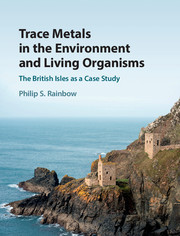Description
Trace Metals in the Environment and Living Organisms
The British Isles as a Case Study
Author: Rainbow Philip S.
Without trace metals there would be no life, yet trace metals can eliminate life. Where, why and so what?
Language: English
Subject for Trace Metals in the Environment and Living Organisms:
Approximative price 190.50 €
In Print (Delivery period: 14 days).
Add to cart
Publication date: 08-2018
756 p. · 19.3x25.3 cm · Hardback
756 p. · 19.3x25.3 cm · Hardback
Description
/li>Contents
/li>Biography
/li>
Trace metals play key roles in life - all are toxic above a threshold bioavailability, yet many are essential to metabolism at lower doses. It is important to appreciate the natural history of an organism in order to understand the interaction between its biology and trace metals. The countryside and indeed the natural history of the British Isles are littered with the effects of metals, mostly via historical mining and subsequent industrial development. This fascinating story encompasses history, economics, geography, geology, chemistry, biochemistry, physiology, ecology, ecotoxicology and above all natural history. Examples abound of interactions between organisms and metals in the terrestrial, freshwater, estuarine, coastal and oceanic environments in and around the British Isles. Many of these interactions have nothing to do with metal pollution. All organisms are affected from bacteria, plants and invertebrates to charismatic species such as seals, dolphins, whales and seabirds. All have a tale to tell.
Preface; Acknowledgements; 1. Introduction; 2. Metals and mining; 3. Biology of trace metals; 4. Terrestrial Environment; 5. Freshwater; 6. Estuaries; 7. Coastal seas and oceans; 8. Epilogue; References; Index.
Philip S. Rainbow has more than forty years' experience of research into the biology of trace metals. As lecturer, reader and professor at Queen Mary University of London, he taught students at undergraduate, Master's and Ph.D. levels, and often ran courses overseas. From 1997 to 2013, he was Keeper of Zoology and subsequently Head of the Department of Life Sciences, at the Natural History Museum, London. He has published more than 250 refereed scientific publications, including two co-authored and seven edited books, and also upwards of thirty popular articles. In 2002, he was awarded the Environmental Pollution Kenneth Mellanby Review Award.
© 2024 LAVOISIER S.A.S.



